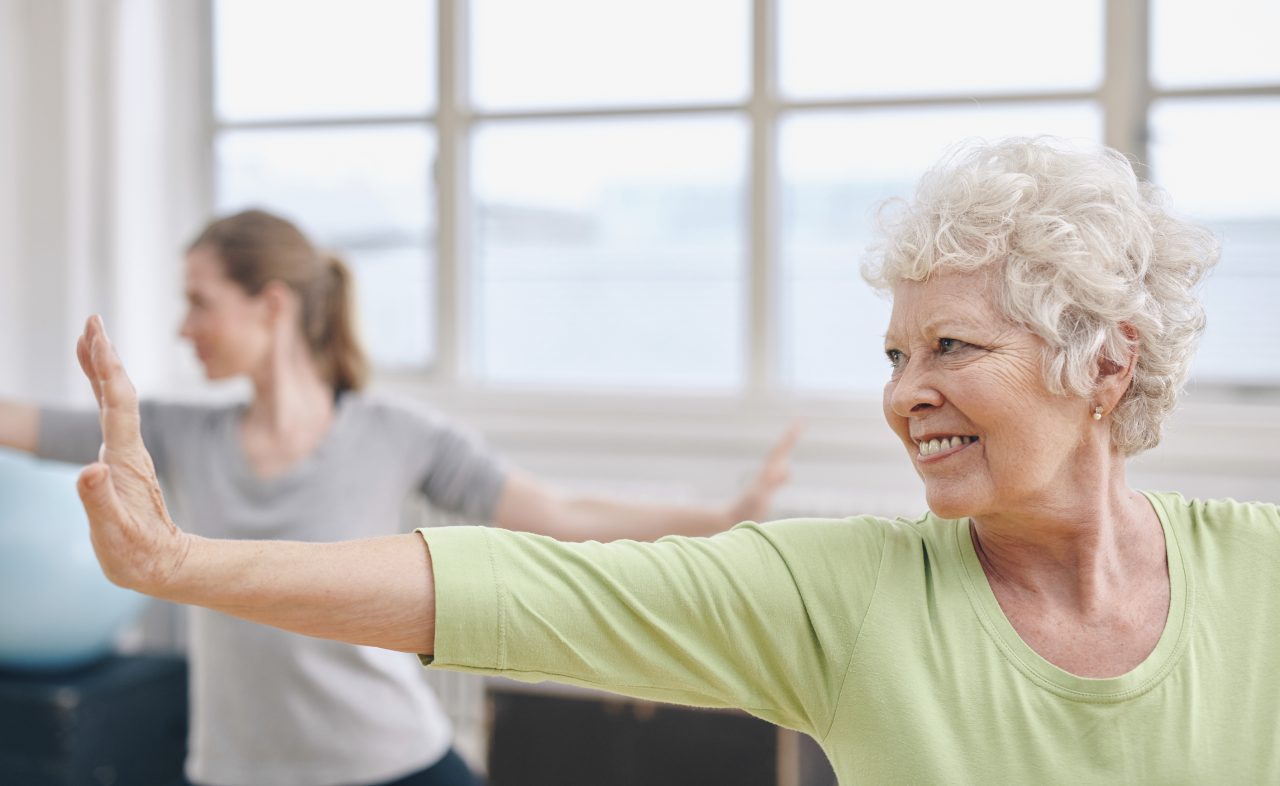Q. Is Yoga too strenuous for seniors?
If the yoga sessions accommodate personal physical limitations, there's no reason a senior can't start this 4,000-year-old practice. It's a good idea to find out exactly what you'll be doing in your yoga class and discuss it with your doctor first.
Yoga has been shown to help alleviate many of the health problems faced by older adults. In fact, the many benefits of yoga are supposed to combat the aging process.
There must be something to it, because yoga has become a popular exercise choice for our older adult population. Yoga classes are found in many senior centers and assisted living residences.
If yoga can end a sedentary lifestyle, it will be a big plus. Too much time on the sofa leads to weak muscles. Not enough weight-bearing activity contributes to osteoporosis. Insufficient movement leads to joint deterioration and loss of flexibility.
All the current scientific evidence shows that geezers should exercise, even though many older people think it could harm them. Study after study demonstrates that seniors hurt their health a lot more by sitting around.
Yoga can help your balance, a serious concern for seniors. About one in ten people over 65 experiences difficulty with balance. More than 40 percent of Americans will go to a doctor complaining of dizziness.
The Centers for Disease Control and Prevention reports that, each year more than one-third of people over 65 years suffer a fall. Falls are the leading cause of injury deaths among older adults.
Many health concerns have been linked to the sedentary lifestyle. These include: reduced joint flexibility, arthritis and bursitis, high blood pressure, increased body fat, osteoporosis, low back pain, breathing difficulties, poor blood circulation, vision problems, stress buildup and inability to sleep properly.
So, what exactly is yoga?
Yoga refers to traditional physical and mental disciplines that originated in India. The word is associated with meditative practices in Indian religions.
According to the U.S. National Institutes of Health, proper yoga practice combines physical postures that participants flow into and then hold before proceeding to the next posture; a focus on breathing techniques that make participants more aware of their bodies, and deep meditation and relaxation, allowing participants to focus on their spirituality.
The physical postures have colorful descriptive names. Some that are recommended for seniors are: plank, cobra, cat, cow, tabletop, warrior, triangle, pigeon, seated twist, tree, shoulder stand, laying twist, happy baby pose and one-legged downward dog.
Here are some suggested guidelines for practicing Yoga if you are an older adult:
- Get into a smaller class so your individual health concerns can be attended to more effectively
- Slow down the transition between poses
- Reduce the holding time for each posture (known as an “asana”).
- Focus your gaze in a specific spot to help your balance.
- Consider options for each pose
- Use props if necessary
- Concentrate on areas that are typically tight or weak in seniors. These include ankles, hips, hamstrings, the low back and chest muscles
- Do not perform a lot of complicated poses









